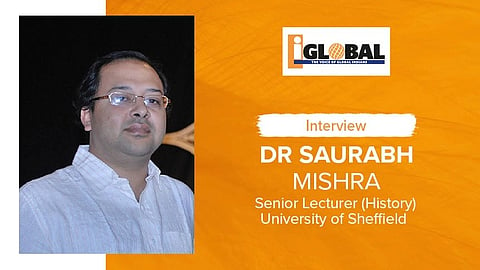

‘Indo + Caribbean: The creation of a culture’ is a new free display that has opened at the Museum of London Docklands in its London, Sugar and Slavery Gallery. Based on stories of Londoners of Indian-Caribbean descent, the display is geared towards unravelling the shared Indian and Caribbean history behind labourers who were shipped from India to work on the sugar plantations of the Caribbean islands.
Following the Slavery Abolition Act of 1833, British planters in the Caribbean devised a new scheme to source cheap labour for their plantations, recruiting workers from India to work for three to five years in return for transport, a minimal wage and some basic provisions. Around 450,000 Indians undertook the long and difficult journey, taking up to five months, to the British Caribbean.
In this interview, Dr Saurabh Mishra – the academic advisor to the display – talks through the significance of this new free display, how it resonates with modern times and why it’s important to know more about this aspect of colonial history.
What, in your view, is the standout feature of this exhibition?
Simply having an exhibition on a theme that the public knows so little about is a great development. I’m a lecturer by profession, and I know that students know very little about what came after slavery; most do not even know about this phenomenon called indenture. In fact, my students often tell me that they are taught very little about Empire at schools, that it is a theme that is brushed under the carpet. This exhibition will do the much-needed job of informing the general public, and children in particular, about imperialism and its impact.
Besides this, the exhibition itself is well-organised and is designed in a way that both informs as well as evokes a sense of curiosity amongst visitors.
How do you see this display resonate with calls for a deeper analysis about the Empire?
The timing of this exhibition is really significant, as it comes at a time when voices against decolonisation are gaining. We all know about movements such as Black Lives Matter and Rhodes Must Fall, which have generated new interest in matters related to decolonisation. The displays in the museum resonate with the calls being made for decolonisation in the public sphere.
For example, one of the exhibits on display is a letter from John Gladstone, father of a future Prime Minister of the country; going through this letter, one gets a good sense of how little he valued lives of Indian labourers. These, and other exhibits, are like nuggets of information that reflect the larger fact that several prominent families in the country had some connection with Caribbean sugar – that their wealth was made off the sweat and toil of some of the poorest and most marginalised people in the world.
Apart from this, the exhibition puts the worker at the centre of the story of indenture, and therefore encourages people to think about it (and Empire in general) through the eyes of those who were so voiceless as to leave few records behind them.
MORE LIKE THIS…
What are the key lesser-known aspects that you feel this exhibition will help spotlight?
I have mentioned one of these before – that prominent families in Britain had a connection with indenture. But it will also bring into focus the fact that, once slavery had been abolished, things did not suddenly become completely fine; that slavery continued in other forms, such as indenture. The exhibition also captures the rhythms of life of the workers themselves. I know that this matters a lot to those who are descendants of indentured labourers – and there are significant numbers of them in Britain today – but it should also matter to those who want to know more about Britain’s hidden pasts.
In terms of the actual things on display, I found some of the items particularly interesting. One shows forms that workers put their thumb impressions on, in most cases without realising the full implications of this simple act. A second shows logs maintained by a shipping company recording how many workers had embarked in Calcutta and how many eventually reached the plantations, with no expression of empathy for those who had lost their lives during the long journey. As far as planters were concerned, these workers were merely commodities that helped boost the productivity of their plantations.
MORE LIKE THIS…
Why is it important to study/know about this phase of history?
Simply because it is important to know both about the good and the bad, the glorious and the depressing parts of British history. We cannot simply brush something aside because it does not fit within our image of a progressive, forward-looking Britain. As they say, we must learn from history if we do not want history to repeat itself.
This exhibition comes at a time when, once again, stories about mistreatment of migrants across the world are coming into the public eye. There have been numerous reports about boats carrying migrants that have capsized, migrants from the Philippines being paid less than minimum wage in the US, or the recent controversy over the use of Indian migrant workers at the Qatar World Cup – such stories remind us that older issues have not died away. They live with us in new forms, and will continue to do so unless we do something about it. In this sense, this exhibition is a harking back to the past, but is also a call to the present.
MORE LIKE THIS…
*Info: Museum of London